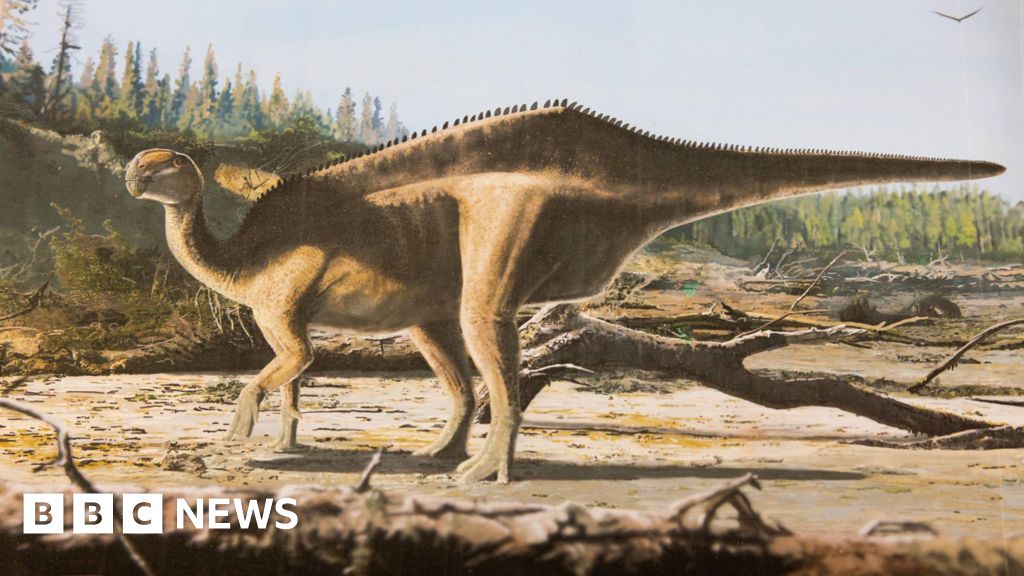
New ‘sail-backed’ dinosaur named after Dame Ellen MacArthur
How did your country report this? Share your view in the comments.
Diverging Reports Breakdown
New ‘sail-backed’ dinosaur named after Dame Ellen MacArthur
Newly-discovered species of dinosaur is named after a female. It is thought to have been part of a larger family of the same species. It was found on the Isle of Wight and is believed to have lived in the late Cretaceous period. It has been named after the female who first discovered it in the early 1900s. The species is now thought to be extinct, but may have been alive for a longer period of time than first thought. The discovery was made by a team of researchers at the University of Oxford.
5 hours ago Share Save Share Save
PA/James Brown An artist’s impression issued by the University of Portsmouth of an Istiorachis macaruthurae
A new species of dinosaur that had an “eye-catching sail” along its back has been named after sailor Dame Ellen MacArthur. The dinosaur, unearthed on the Isle of Wight, has been given the name Istiorachis macaruthurae with the first word meaning “sail spine” and the second referring to Dame Ellen’s surname. The record-breaking round-the-world yachtswoman said it was a “huge honour”, adding: “The fact that the Istiorachis ‘sail’ could be likened to the sails I have spent so much of my life below was very touching.” After being analysed it has now been officially named and described by island-based scientist Jeremy Lockwood, and is now on display at Dinosaur Isle Museum in Sandown.
PA/James Brown Jeremy Lockwood with the spinal column of an Istiorachis macaruthurae
The medium-sized herbivore once roamed the floodplains of what is now the island’s south-west coast. Its remains, which date back 125 million years, were originally discovered by fossil hunter Nick Chase, who died of cancer in 2019. Before Dr Lockwood’s analysis the fossils were assumed to have belonged to one of the two known iguanodontian dinosaur species from the Isle of Wight. He said: “While the skeleton wasn’t as complete as some of the others that have been found, no-one had really taken a close look at these bones before. “It was thought to be just another specimen of one of the existing species, but this one had particularly long neural spines, which was very unusual. “It may have been used for display, much like a peacock’s feathers, possibly to attract mates or intimidate rivals.” For the study, researchers compared the fossilised bones with a database of similar dinosaur back bones which allowed them to see how these sail-like formations had evolved.
EMCTrust Dame Ellen MacArthur, who is from Derbyshire, said it was “both extraordinary and a huge honour” to have the dinosaur named after her
Source: https://www.bbc.com/news/articles/c87ew7qq4wwo
